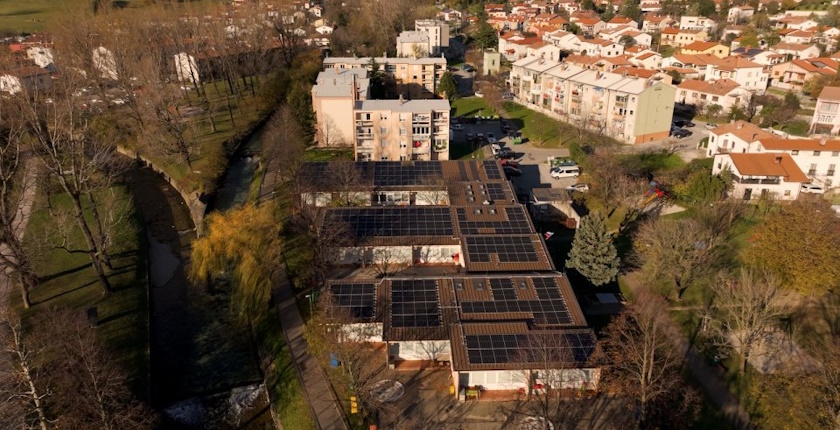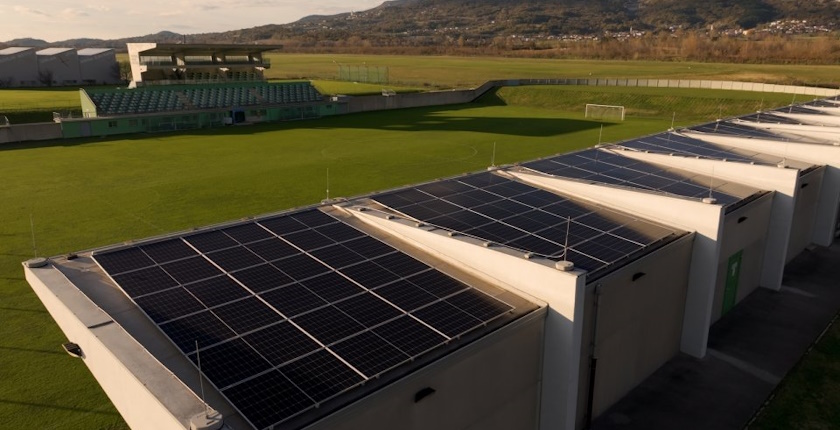
Photo: Municipality of Ajdovščina
In cooperation with the Municipality of Ajdovščina, GEN-I installed rooftop photovoltaic units on five public buildings. They will supply a solar community of 180 households.
Municipal authorities, public institutions and households, especially underprivileged ones, are among the essential segments of the energy transition toward clean sources. Solar power is the simplest and cheapest solution. Slovenian state-owned GEN-I saw an opportunity there and introduced a solar energy service for self-consumption for households unable to install photovoltaic panels. In cooperation with the Municipality of Ajdovščina in the western part of the country, the company set up solar power units on the roofs of five public buildings.
Their combined capacity is 686 kW, with an estimated annual output of 873 MWh. The system will supply 180 households, according to GEN-I and the local authority. The firm, part of GEN Group, was led by current Prime Minister Robert Golob.
Under the community solar power plant model, users lease a part of the facility, which lowers their electricity bills. GEN-I is mostly a gas and power supplier and trader. The company said that since 2021 it only supplies carbon-free electricity.
The individual customers are expected to be connected to the network within weeks and become the first real solar community in Slovenia, the announcement reads.
Investment born out of pilot project in Ajdovščina
GEN-I and the Municipality of Ajdovščina first conducted a pilot project in Budanje. The first community rooftop PV plant was installed in 2020 on the primary school in the village. It supplies seven houses.
The largest of the five new solar power systems in Ajdovščina, 266.6 kW, is on the roof of the sports center. The others are on the elementary school, kindergarten, stadium and health center. The facilities have a projected operating life of 30 years.
By entering a community, citizens get cheaper electricity and avoid investment costs, obtaining permits, construction work, maintenance and insurance
Mayor Tadej Beočanin expressed satisfaction with the response. “By participating in the community, citizens secured sustainable energy at a lower price than the market price, and at the same time avoided investment costs, obtaining permits, construction work, as well as maintenance and insurance,” he pointed out and added that local residents, who have priority, can still apply to join.
Slovenia allowed households two years ago to connect to self-supply electricity systems located outside of their local low-voltage network.
No upfront costs for households that join solar community
President of the Management Board of GEN-I Maks Helbl highlighted the importance of solar communities in challenging times.
“In recent years, the energy market was shaken by numerous changes, both in terms of prices and regulations. Solar power plants can significantly contribute to more predictable cost management, and with solar communities, even those who cannot build their own solar power plant due to spatial, technical or financial reasons, will be able to benefit from their advantages. Such individuals can harness the energy of the sun produced on a roof somewhere else. The important thing is that to enter this kind of community, the members don’t require any financial input. All that is needed is their consent,” the CEO stated.
GEN-I said it aims to establish large virtual communities that anyone in the country can join. But there are still significant obstacles with regard to spatial planning and rules, it stressed.
In January, a renewable energy community in Hrastnik installed the first photovoltaic system for joint self-supply in Slovenia. Ljubljana launched a community solar power project last year.
In the region that Balkan Green Energy News covers, Romania has the largest prosumers segment. It is also strong in the development of municipal solar power projects, trailing only Turkey. Greece has the largest energy communities sector.



















Be the first one to comment on this article.